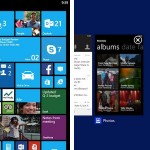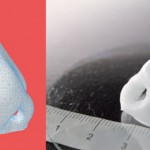2012 Set Record For Most Expensive Gas In US
An anonymous reader writes "According to data from the American Automobile Association, the average price for a gallon of gas in the U.S. was higher in 2012 than in any year before it. Nationwide, gas averaged $3.60/gallon, up from $3.51/gallon in 2011. 'The states with the most expensive annual averages for 2012 included Hawaii ($4.31), Alaska ($4.09), California ($4.03), New York ($3.90) and Connecticut ($3.90). The states with the least-expensive annual averages included South Carolina ($3.35), Missouri ($3.38), Mississippi ($3.39), Tennessee ($3.40) and Oklahoma ($3.41). The highest daily statewide average of the year was $4.67 in Calif. on Oct. 9, while the lowest daily statewide average was $2.91 a gallon in South Carolina on July 3.' Bloomberg reports that fuel consumption is down 3.6% compared to last year, while U.S. oil production reached almost 7 million barrels a day recently, a level that hasn't been reached since 1993. AAA predicts gas prices will be cheaper in 2013." Read more of this story at Slashdot.
BlackBerry’s Latest Experiment: a $2,300 ‘Secure’ Tablet
An anonymous reader writes: After missing the boat on smartphones, BlackBerry has been throwing everything they can at the wall to see what sticks. From making square phones to insisting users want physical keyboards, their only standard is how non-standard they've become. Now they're expanding this strategy to the tablet market with a security-centric tablet that costs $2, 300. And they're not doing it alone — the base device is actually a Samsung Galaxy Tab S 10.5. The tablet runs Samsung Knox boot tech, as well as software from IBM and encryption specialist Secusmart (which BlackBerry recently purchased). The device will be targeted at businesses and organizations who have particular need for secure devices. "Organizations deploying the SecuTablet will be able to set policies controlling what apps can run on the devices, and whether those apps must be wrapped, said IBM Germany spokesman Stefan Hefter. The wrapping process—in which an app is downloaded from a public app store, bundled with additional libraries that encrypt its network traffic and intercept Android 'intents' for actions such as cutting or pasting data, then uploaded to a private app store—ensures that corporate data can be protected at rest, in motion and in use, he said. For instance, it can prevent data from a secure email being copied and pasted into the Facebook app running on the same device—yet allow it to be pasted into a secure collaboration environment, or any other app forming part of the same 'federation, ' he said." Read more of this story at Slashdot.
ESA Rebukes EFF’s Request To Exempt Abandoned Games From Some DMCA Rules
eldavojohn writes It's 2015 and the EFF is still submitting requests to alter or exempt certain applications of the draconian DMCA. One such request concerns abandoned games that utilized or required online servers for matchmaking or play (PDF warning) and the attempts taken to archive those games. A given examples is Madden '09, which had its servers shut down a mere one and a half years after release. Another is Gamespy and the EA & Nintendo titles that were not migrated to other servers. I'm sure everyone can come up with a once cherished game that required online play that is now abandoned and lost to the ages. While the EFF is asking for exemptions for museums and archivists, the ESA appears to take the stance that it's hacking and all hacking is bad. In prior comments (PDF warning), the ESA has called reverse engineering a proprietary game protocol "a classic wolf in sheep's clothing" as if allowing this evil hacking will loose Sodom & Gomorrah upon the industry. Fellow gamers, these years now that feel like the golden age of online gaming will be the dark ages of games as historians of the future try to recreate what online play was like now for many titles. Read more of this story at Slashdot.
New Ransomware ‘Jaff’ Spotted; Malware Groups Pushing 5M Emails Per Hour To Circulate It
An anonymous reader writes: The Necurs botnet has been harnessed to fling a new strain of ransomware dubbed "Jaff". Jaff spreads in a similar way to the infamous file-encrypting malware Locky and even uses the same payment site template, but is nonetheless a different monster. Attached to dangerous emails is an infectious PDF containing an embedded DOCM file with a malicious macro script. This script will then download and execute the Jaff ransomware. Locky -- like Jaff -- also used the Necurs botnet and a booby-trapped PDF, security firm Malwarebytes notes. "This is where the comparison ends, since the code base is different as well as the ransom itself, " said Jerome Segura, a security researcher at Malwarebytes. "Jaff asks for an astounding 2 BTC, which is about $3, 700 at the time of writing." Proofpoint reckons Jaff may be the work of the same cybercriminals behind Locky, Dridex and Bart (other nasty malware) but this remains unconfirmed. And Forcepoint Security Labs reports that malicious emails carrying Jaff are being cranked out at a rate of 5 million an hour on Thursday, or 13 million in total at the time it wrote up a blog post about the new threat. Read more of this story at Slashdot.
NASCAR Team Pays Ransomware Fee To Recover Files Worth $2 Million
An anonymous reader writes: "NASCAR team Circle Sport-Leavine Family Racing (CSLFR) revealed today it faced a ransomware infection this past April when it almost lost access to crucial files worth nearly $2 million, containing car parts lists and custom high-profile simulations that would have taken 1, 500 man-hours to replicate, " reports Softpedia. "The infection took place on the computer belonging to CSLFR's crew chief. Winston's staff detected the infection when encrypted files from Winston's computer began syncing to their joint Dropbox account." It was later discovered that he was infected with the TeslaCrypt ransomware. Because the team had no backups of the crucial data, they eventually paid the ransom (around $500). This happened before TeslaCrypt's authors decided to shut down their operations and release free decryption keys. Read more of this story at Slashdot.
Windows Server will add the Linux subsystem, join the Insider program
(credit: Microsoft) SEATTLE—When Microsoft first introduced the Windows Subsystem for Linux (WSL) at last year's Build developer conference , it said that it was doing so to make developers who were familiar with the Linux command line feel comfortable on Windows . The immediate and inevitable question was "Well, what about Windows Server?" Development is one thing, but what if organizations wanted to occasionally deploy their Linux software on Windows? Although Windows Server 2016 and Windows 10 share many components, the Server operating system hasn't thus far included WSL, consistent with the "developer only" rationale. But that's going to change: at Build this week, Microsoft announced that WSL will be included in Server later this year. Microsoft still isn't positioning this as a way of running Linux server in production on Windows; rather, the company says the addition will be useful for administrative tasks. With WSL, Windows can run scripts written for Linux. But we're hard-pressed to see things stopping there; it seems inevitable that at some point, Windows will offer the ability to run Linux server software as one of its features. Read 3 remaining paragraphs | Comments
Germany Sets New National Record With 85 Percent of Its Electricity Sourced From Renewables
Germany was able to set a new national record for the last weekend of April with 85 percent of all electricity consumed in the country being produced from renewables -- wind, solar, biomass, and hydroelectric power. Digital Trends reports: Aided by a seasonal combination of windy but sunny weather, during that weekend the majority of Germany's coal-fired power stations weren't even operating, while nuclear power stations (which the country plans to phase out by the year 2022) were massively reduced in output. To be clear, this is impressive even by Germany's progressive standards. By comparison, in March just over 40 percent of all electricity consumed in the country came from renewable sources. However, while the end-of-April weekend was an aberration, the hope is that it won't be for too much longer. According to Patrick Graichen of the country's sustainability-focused Agora Energiewende Initiative, German renewable energy percentages in the mid-80s should be "completely normal" by the year 2030. Read more of this story at Slashdot.
World’s First 5G Field Trial Delivers Speeds of 3.6Gbps Using Sub-6GHz
Mark.JUK writes: Global Chinese ICT firm Huawei and Japanese mobile giant NTT DOCOMO today claim to have conducted the world's first large-scale field trial of future 5th generation (5G) mobile broadband technology, which was able to deliver a peak speed of 3.6Gbps (Gigabits per second). Previous trials have used significantly higher frequency bands (e.g. 20-80GHz), which struggle with coverage and penetration through physical objects. By comparison Huawei's network operates in the sub-6GHz frequency band and made use of several new technologies, such as Multi-User MIMO (concurrent connectivity of 24 user devices in the macro-cell environment), Sparse Code Multiple Access (SCMA) and Filtered OFDM (F-OFDM). Assuming all goes well then Huawei hopes to begin a proper pilot in 2018, with interoperability testing being completed during 2019 and then a commercial launch to follow in 2020. But of course they're not the only team trying to develop a 5G solution. Read more of this story at Slashdot.
The Price of 500MB of Mobile Data Across the World
Today, nearly half of the world's total population has potential access to some kind of 3G or 4G network, which is five times the level of mobile coverage we were at just five years ago. Unfortunately, not all mobile broadband is created equal—especially where price is concerned. Read more...
Researchers can now 3D-print nose cartilage in 16 minutes
Doctors have been employing 3D-printed tissue for years now. But even though the hype around 3D bioprinting has raised expectations that it will save lives and shorten donor wait lists, fully functional printed organs are not feasible yet. While we won't be seeing blood pumping printed hearts any time soon, getting a new nose could become easier. Professor Marcy Zenobi-Wong's team of researchers, led by Matti Kesti, at ETH Zurich's Cartilage Engineering and Regeneration laboratory, has found a way to bioprint a joint or nose cartilage that is designed to grow with the body over time. Current cartilage transplant procedures rely on two-dimensional cell generation that doesn't evolve as the patient's joint regains function in the future. 3D bioprinted cartilages, on the other hand, are expected to reproduce and become a part of the body's mechanism. In the case of reconstructive surgery on a smashed nose, a digital 3D model is created while a biopsy removes cartilage cells from the patient's body -- knee, ear or even pieces of the busted nose. The cells are then spawned with suitable biopolymers, either extracted from seaweed or generated by the human body, to create a hydrogel consistent with the suspension of the printer. The biopolymers act as a shaping mold for the cells until the cartilage cells in the body break them down. Over time, according to the research team, it would become virtually impossible to differentiate between the transplant and the original cartilage in the body. "We hope that in the future our technology could be used to overcome the need for cartilage donor tissue, " Kesti told us. "The bioprinted cartilage piece could be printed based on the patient defect and need so that the personalized shape and size is regained." Even though this technology has the potential to personalize medicine and create body-replicating magic, bioprinting and research is an expensive and exhaustive process that prevents cellular 3D printer cartridges from being widely available in hospitals just yet. "The potential of 3D bioprinting in future is that it is the ultimate technology to regenerate patient specific shape of tissue or even organs, " says Kesti. "There is no better way to make the shape than 3D printing so it is worth investigating the technology." His lab, equipped with a majestic bioprinter that can create a cartilage in roughly 16 minutes, is now ready for pre-clinical trials. If the cellular concoction becomes a viable option for human trials, it could make bioprinted cartilage implants far more successful than their silicone counterparts. [Image credit: Cartilage Engineering & Regeneration Group , ETH Zurich] Comments Source: ETH Zurich












